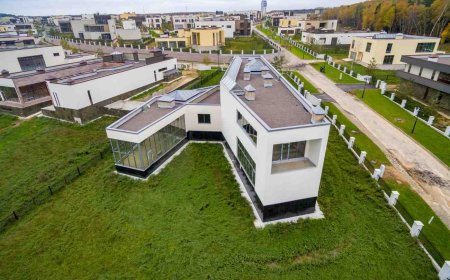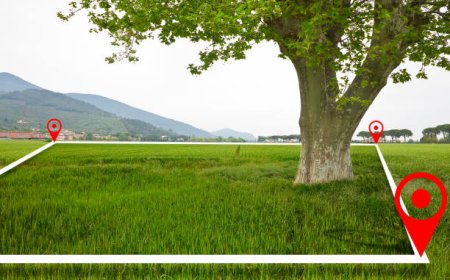Artificial Intelligence of Things (AIoT): The Next Evolution in Connected Technology
The Artificial Intelligence of Things (AIoT) market was valued at USD 27.72 Billion in 2024 and is expected to reach USD 157.46 Billion by 2032, growing at a CAGR of 24.25% (2025-2032). Get insights on trends, segmentation, and key players with Data Bridge Market Research Reports.

Introduction
In the ever-evolving landscape of technology, two of the most transformative trends - Artificial Intelligence (AI) and the Internet of Things (IoT) - are converging to create a powerful new paradigm: the Artificial Intelligence of Things (AIoT). This fusion promises to revolutionize how devices communicate, make decisions, and improve our daily lives by combining the connectivity of IoT with the intelligence of AI.
Definition
Artificial Intelligence of Things (AIoT) is the integration of Artificial Intelligence (AI) technologies with the Internet of Things (IoT) devices and networks. This combination enables connected devices to collect data, analyze it intelligently, and make autonomous decisions, enhancing efficiency, automation, and real-time responsiveness across various applications such as smart homes, industrial automation, and healthcare.
What is AIoT?
The integration of AI technologies into IoT devices and infrastructure is known as the Artificial Intelligence of Things, or AIoT. While IoT connects everyday objects to the internet, allowing them to send and receive data, AIoT takes this a step further by enabling these devices to analyze data, learn from it, and make autonomous decisions.
Put simply, AIoT makes smart devices smarter. Instead of merely collecting data and passing it along to humans or centralized systems for analysis, AIoT devices can process and act on information locally or in the cloud, creating a seamless, efficient, and highly responsive ecosystem.
The Building Blocks of AIoT
Understanding AIoT requires a look at its foundational components:
Internet of Things (IoT): A vast network of interconnected devices such as sensors, cameras, home appliances, wearables, industrial machines, and vehicles that communicate via the internet.
Artificial Intelligence (AI): Technologies like machine learning, computer vision, natural language processing, and robotics that enable machines to simulate human intelligence and improve performance over time.
Edge Computing: A computing framework where data is processed near the source of generation (the edge of the network) rather than relying solely on centralized cloud servers. This reduces latency and enhances real-time decision-making.
Cloud Computing: Provides massive storage and powerful computation capabilities that support complex AI models and large-scale data analytics.
By combining these, AIoT creates a dynamic ecosystem where devices are connected, intelligent, and capable of operating autonomously or collaboratively.
Why AIoT is the Next Big Leap
While IoT has already transformed industries by enabling data collection and remote control, its dependence on centralized processing has limitations such as latency, bandwidth constraints, and security risks. AIoT addresses these issues by distributing intelligence closer to devices and making them more autonomous.
Heres why AIoT is poised to be the next evolution in connected technology:
Enhanced Real-Time Decision Making:
Local data analysis by AIoT devices with edge AI enables quick insights and action. For example, in autonomous vehicles, AIoT enables rapid processing of sensor data to make split-second driving decisions without needing to communicate with distant servers. This improves safety and performance.
Improved Operational Efficiency:
AIoT can optimize processes in industries like manufacturing, energy, and logistics by enabling predictive maintenance, quality control, and resource management. AI systems examine data from IoT sensors to anticipate equipment faults before they occur, cutting expenses and downtime.
Greater Scalability:
With AI processing distributed across edge devices, AIoT systems can scale more easily. This reduces the need for massive cloud infrastructure and bandwidth, making it practical to deploy millions of intelligent devices in smart cities, agriculture, or healthcare.
Personalized User Experiences:
In consumer electronics, AIoT enhances personalization by learning user preferences and behaviors. Smart homes, wearables, and personal assistants become more intuitive, proactive, and responsive, creating better user satisfaction.Stronger Security:
AIoT introduces new ways to detect and respond to cybersecurity threats by analyzing device behavior in real time. AI-driven anomaly detection on edge devices can identify intrusions faster and more accurately than traditional centralized methods.
Applications of AIoT Across Industries
AIoT's adaptability allows it to be used in a variety of sectors:
Smart Homes and Cities:
AIoT powers intelligent homes that automate lighting, heating, security, and appliances based on user habits and environmental conditions. On a larger scale, AIoT facilitates smart city initiatives that improve traffic management, energy distribution, waste collection, and public safety by analyzing sensor data in real time.
Healthcare and Wearables:
Wearable devices equipped with AIoT can continuously monitor vital signs and detect abnormalities such as irregular heartbeats or glucose levels, alerting patients and healthcare providers instantly. AIoT also enables remote patient monitoring, reducing hospital visits and improving chronic disease management.
Industrial Automation:
In manufacturing, AIoT supports Industry 4.0 by integrating robotics, sensors, and AI to optimize production lines, predict equipment failures, and ensure quality control. This leads to reduced operational costs and higher output.
Agriculture:
AIoT devices in smart farming monitor soil health, crop growth, and weather conditions, enabling precision agriculture. AI models analyze this data to optimize irrigation, fertilizer use, and pest control, increasing yield and sustainability.
Transportation and Logistics:
AIoT enhances fleet management, route optimization, and autonomous driving. Sensors and AI analyze vehicle performance and environmental conditions to improve safety, reduce fuel consumption, and increase delivery efficiency.
Challenges Facing AIoT Adoption
Despite its promising potential, AIoT faces several challenges:
-
Data Privacy and Security: With more devices collecting sensitive data, ensuring privacy and protection against cyberattacks is critical. AIoT systems must implement robust encryption, authentication, and anomaly detection
-
Interoperability: AIoT devices from different manufacturers need to communicate seamlessly. Industry standards and protocols must evolve to support interoperability.
-
Cost and Complexity: Implementing AI on edge devices can be expensive and technically challenging, especially for small businesses or resource-constrained environments.
-
Energy Consumption: AI algorithms and IoT sensors require power, and optimizing energy efficiency for battery-operated devices remains an important research area.
The Future of AIoT
The future of AIoT is bright, with ongoing advances in AI models, sensor technology, and communication networks such as 5G and upcoming 6G. Here are some trends to watch:
-
TinyML and Embedded AI: Machine learning models will continue shrinking in size, enabling more powerful AI on ultra-low-power edge devices.
-
AIoT in Robotics: Autonomous drones, delivery robots, and service bots will leverage AIoT for smarter navigation and interaction.
-
Digital Twins: AIoT will make it possible to mimic and optimise real-time operations using virtual copies of physical systems.
-
Integration with Blockchain: Blockchain can enhance AIoT security and data integrity by enabling decentralized and tamper-proof records.
-
Human-AI Collaboration: AIoT devices will increasingly assist humans by augmenting decision-making rather than replacing it, creating more efficient workflows.
Artificial Intelligence of Things (AIoT) Market Growth Rate
According to Data Bridge Market Research, the size of the global artificial intelligence of things (AIoT) market was estimated at USD 27.72 billion in 2024 and is projected to grow at a compound annual growth rate (CAGR) of 24.25% to reach USD 157.46 billion by 2032.
Learn More: https://www.databridgemarketresearch.com/reports/global-artificial-intelligence-of-things-aiot-market
Conclusion
Artificial Intelligence of Things represents a transformative leap beyond simple connectivity. By merging AI with IoT, AIoT enables devices that are not only connected but intelligent and autonomous, leading to more efficient operations, enhanced user experiences, and smarter decision-making across industries.
































